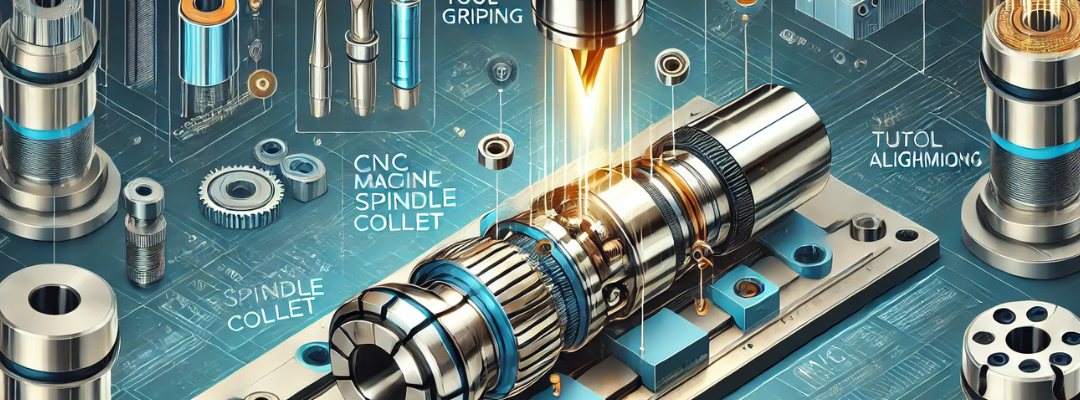A CNC machine spindle collet is a crucial component used to hold and secure a cutting tool or workpiece within the spindle of the CNC machine. It ensures that the tool or workpiece remains firmly in place during high-speed rotations and machining operations. The collet is designed to provide a tight grip through mechanical clamping, ensuring stability and precision in the machining process.
Function of a CNC Machine Spindle Collet
- Tool Holding and Clamping: The primary function of a spindle collet is to securely hold the cutting tool (such as a drill bit, end mill, or router bit) in place within the spindle. The collet clamps down onto the shank of the tool, ensuring that it remains firmly in position during the machining process, even under high speeds and heavy loads.
- Precise Alignment: The collet ensures that the cutting tool is properly aligned with the axis of rotation of the spindle. This precision alignment is essential for maintaining accurate cuts and reducing runout, which refers to the unwanted wobbling or eccentricity of the tool during rotation.
- Vibration Reduction: By holding the tool tightly and ensuring precise alignment, the collet minimizes vibrations that can occur during machining. Reduced vibration improves the quality of the surface finish on the workpiece and reduces wear on both the tool and machine components.
- Quick Tool Changes: Many CNC machines use collet systems that allow for quick and easy tool changes. Collets are often part of tool holders or chucks that can be quickly tightened or loosened, allowing operators to switch between different cutting tools efficiently during multi-step operations.
- Uniform Clamping Force: The collet provides uniform clamping force around the circumference of the tool shank. This ensures that the tool is evenly held in place, preventing any slippage or movement during cutting, which is critical for precision machining.
Importance of a CNC Machine Spindle Collet
- Ensures Precision and Accuracy: The collet plays a critical role in maintaining the precision of the CNC machine. By securely holding the cutting tool in alignment with the spindle’s rotational axis, it ensures that the tool cuts accurately without deviation, resulting in precise machining outcomes and consistent product quality.
- Reduces Runout: Collets help reduce runout, which is a common problem in machining that leads to inaccurate cuts and poor surface finishes. Low runout ensures that the tool rotates precisely, leading to smoother finishes, better dimensional accuracy, and reduced tool wear.
- Prevents Tool Slippage: In high-speed and high-load machining operations, it is essential that the cutting tool remains securely clamped. Collets provide the necessary clamping force to prevent the tool from slipping or moving, which could lead to tool breakage, damaged workpieces, or poor machining results.
- Enhances Surface Finish Quality: By reducing tool vibrations and maintaining tool stability, the collet improves the surface finish of machined parts. A stable tool produces smoother, more consistent cuts, reducing the need for additional finishing operations like polishing or grinding.
- Extends Tool Life: A properly secured tool experiences less vibration, stress, and wear during machining. By minimizing tool movement and providing even clamping pressure, collets help extend the life of cutting tools, leading to cost savings and fewer tool changes during production runs.
- Increases Machining Efficiency: The quick-change nature of many collet systems allows for rapid tool swaps during machining operations. This reduces downtime between tasks and increases the overall productivity of the CNC machine, especially in multi-step operations where different tools are required for various cuts.
- Supports Versatile Machining Applications: CNC collets come in various sizes and types, allowing them to hold a wide range of tools with different shank diameters. This versatility makes collets suitable for multiple machining applications, from drilling and milling to engraving and grinding.
- Cost-Effective: Compared to other clamping systems, collets are relatively simple and cost-effective solutions for securely holding tools. Their compact design and effectiveness in reducing tool wear and improving machining precision make them an economical choice for CNC operators.


Recent Comments